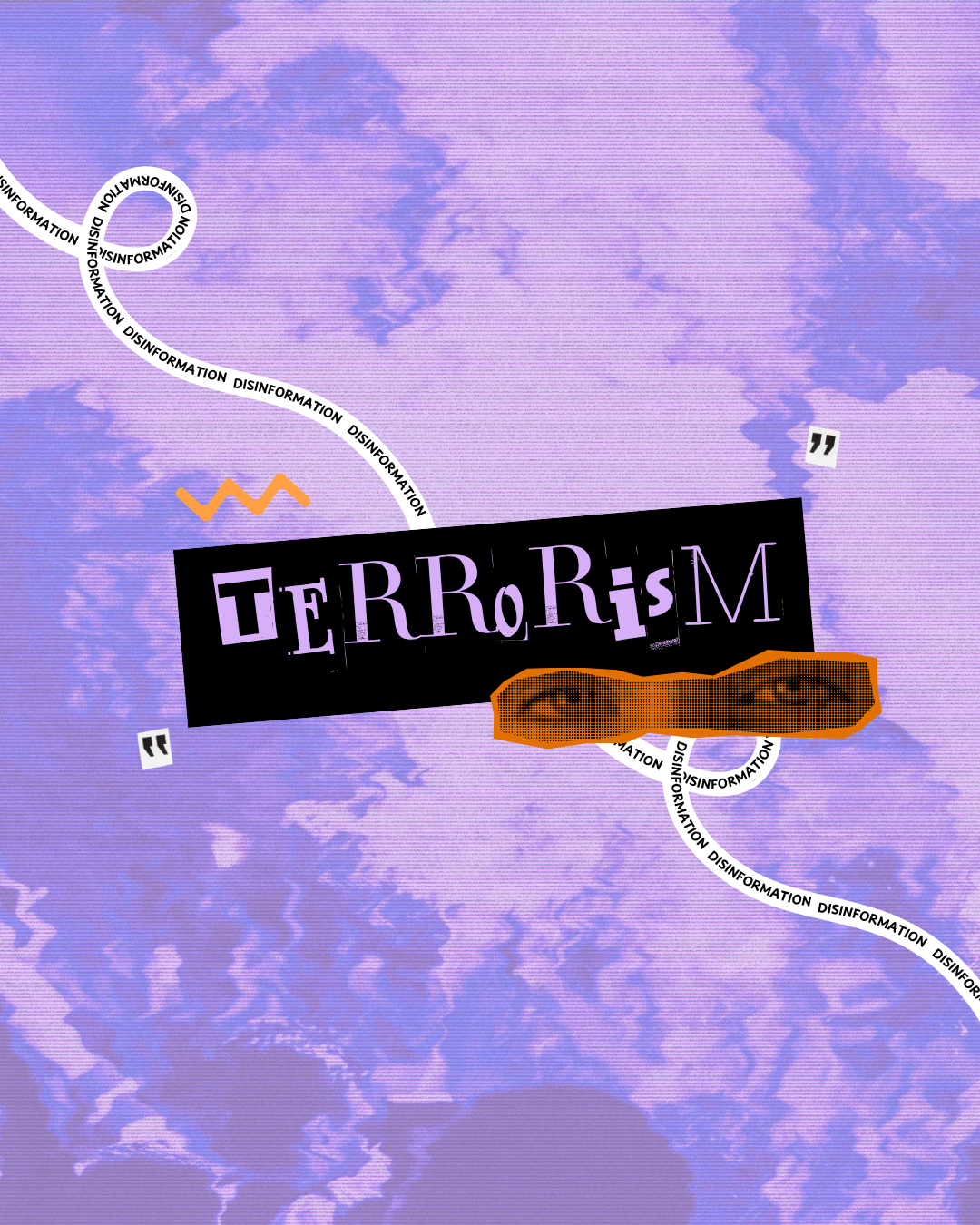Words Matter
“Terrorism”
‘terrorism’ is often used to position migrants – primarily Muslim, racialised migrants – as a foreign threat.

Co-authored with CAGE International
‘Terrorism’ is becoming an increasingly prevalent concept around migration. From older notions of (Muslim) migrants presenting terror threats, to contemporary developments with the Border Security Command and calls for responses to the racist riots to include terror prosecutions, there is a clear need to examine how the concept of terrorism is used in relation to migration.
What do we mean by terrorism?
Terrorism is a politically constructed category. This means that it is something that is defined within a certain political context, and exists in opposition to something else, i.e. non-dominant ideologies that are seen as a threat to dominant political frameworks and objectives. Terrorism as a concept is used to exceptionalise certain ideologies and forms of violence as outside of the norm, which the state defines.
For example, politicians, both Labour and Conservative, were keen to describe the racist, anti-migrant riots in August 2024 as “thuggery,” “disorder” or criminality, in order to distance themselves from the rhetoric regarding migrants, such as “stop the boats”, that the people engaging in this violence got from politicians. If they were to label these acts of violence as far-right, then, it would implicate themselves also. Following this, the pro-establishment defence think tank RUSI even criticised the Government (at the time) for these narratives, where Muslims would be immediately labelled as ‘Islamist extremists’ – phrasing that we reject – for a lot less.
What has terrorism got to do with migration?
In the context of the immigration system, ‘terrorism’ is often used to position migrants – primarily Muslim, racialised migrants – as a foreign threat. Treating migrants as a security risk is visible in policy, with the newly-formed Border Security Command, but also in language used by politicians. Phrases from senior politicians like “securing our borders” present migrants as, inherently, a threat. These ideas are particularly strong given that they focus on people crossing the Channel to seek asylum, the majority of whom are Muslim and People of Colour.
Terrorism powers have already been integrated into migration legislation to result in greater powers to detain and arrest people at ports of entry (e.g. sea ports, airports). The Nationality and Borders Act 2022 expanded powers under Schedule 7 of the Terrorism Act 2000 to allow for migrants at Britain’s borders to be questioned about possible involvement in terrorism while detained or arrested under immigration legislation (Section 78(3A)(a)).
Before the Border Security Command, the Special Immigration Appeals Commission (SIAC) was the other primary site of counter-terror approaches and the immigration system coming together. SIAC deals with appeals of immigration cases, including deprivation and refusal of citizenship on ‘public good’ grounds, as well as exclusion orders and certain deportation cases on ‘national security’ grounds. The process is much more secretive than traditional appeals processes, including the use of secret evidence, which limits people’s access to justice.
Bringing counter-terror and immigration powers together is a process that started during the ‘War on Terror.’ Muslim, racialised populations from Africa, West Asia and South Asia became framed as possible terror threats, which led to their migration to and movement through borders in the West being policed through counter-terror frameworks, rather than the already racist immigration powers alone. Since then, acts of political violence in the UK that have been ascribed the label of ‘Islamist’ have precipitated immense and immediate scrutiny on the immigration status of the individual(s) involved and their family members. Policies like this are then passed by using people’s fears and prejudice against Muslims, migrants and People of Colour to justify such extreme powers and surveillance.
What is happening right now?
Today this looks like the introduction of counter-terror tactics within immigration policy, as with the Border Security Command, and the expansion of existing counter-terror practices within the immigration system, such as making Prevent a statutory duty (i.e. compulsory reporting) in the immigration, including asylum, system.
This is likely to be the tip of the iceberg – many more aspects of the operation of counter-terror powers in the immigration systems are kept much more secret, and therefore receive less scrutiny. Besides SIAC, another example of this is the Counter-Terror Clinical Consultancy Service (CTCCS), through which people in the asylum system may be secretly referred to and monitored by Prevent through a mental health practitioner (although, this is not exclusive to the immigration system). As a result, Muslims are disproportionately reported to Prevent via the NHS, and migrants appear to be particularly vulnerable to falling under referral criteria.
It is important that those in the migration sector are critical of the way that ‘terrorism’ is invoked and aware of the manner in which it impacts Muslim migrants and migratised people. While the Border Security Command and Border Security, Asylum and Immigration Bill are concerning and should be stopped, these are not the start of the presence of the counter-terror system in the immigration system.
Check out our Words Matter campaign.
